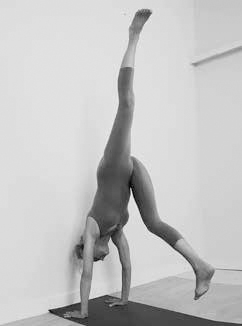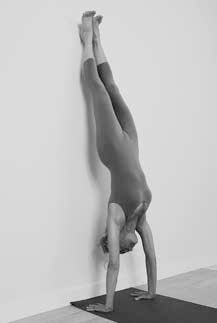THE PURPOSE OF ĀSANAS
- Eva Lucie Daniela
- Oct 10, 2022
- 5 min read
Updated: Aug 4, 2024

The ultimate purpose of Āsana ( आसन ) is to purify the body and our negative karmas, clearing the energetic pathways so that we can open to Love, Healing, Freedom and energy can flow more freely.
Asana practice must be done with a lot of Loving kindness and Devotion. We allow our bodies to become an instrument, freeing ourselves from anger, jealousy and fear to be able to invite Love and Compassion. It becomes a magical practice that can shift our perception of self and others. Through Asana practice, we don’t only purify our bodymind but also our relationships to the world. When we practice with a clear intention and when we can love all beings and things, we are able to lift the veil of Avidya — ignorance to then see the Truth.
When we find ourselves confronted with unsteadiness and resistance to the asanas. This can translate into our daily life and this outside world. Our practice on the mat is just a reflection of this experience of Life we are having.
Sometimes we might perceive a lack of joy, the incapacity of slowing down, loss of balance or the inability to let go. But if we stay longer, just enough of an extended period of time to create change and if we are willing to find the beauty within resistance, everything becomes soft. Magic arises.
ALL THE NUANCES TO THE MEANING..
There are many nuances to the meaning of the word Āsana. Traditionally, it meant your seat. Whenever you would have to choose to sit for pranayama, meditation or chanting. It would also mean the object upon which you were sitting, a mat or some grass.
But eventually, the traditional meaning of the word has expanded in a more updated contemporary interpretation. Today Āsana may be used to refer to a wider range of bodily postures, wovening many movements together in a yoga class.
To the question ‘ How do you define an Āsana practice?’ or ‘What it means to take a seat?’ Sharon Gannon would answer: ‘A seat infers a connection between at least two things. There is the one sitting and that being sat upon or connected to for support. What is it that we are all connected to and supports all of us; this home we call earth. The practice of āsana is understood to be the refinement not only of how our body moves through space or how we sit or even what we sit upon, but the quality of connection to the larger whole. Is the relationship to the earth steady and joyful?’
Additionally, Patanjali gives us an advice here with its Sutra II.46 — Sthira Sukham Asanam.
The connection to the earth should be steady and joyful, if you desire Yoga; the Realization of the Oneness of being.
The word Sthira is translated as ‘stable’ and Sukham as ‘comfortable’ or ‘joyful’. Our effort and attention should lead us to a place where the seat, our connection and relationship to the Earth and others is steady and stable as well as joyful or at least comfortable. A stable relationship is one that can endure hardship and challenges.
The search for a spiritual practice is the search for healing on both an individual and as part of the whole. ‘The āsana-s themselves are celebrations of the world we inhabit and the wisdom it contains.’
THERE IS ALWAYS SOMETHING MORE TO IT…
‘Āsana is like a vortex pulling into its practice connection, kindness, devotion, stillness, healing and self reflection.
As we move our body and attune our mind through an āsana practice we are simultaneously planting the seeds of devotion. Each time we come back to the mat we nourish those seeds and cultivate an intimacy to the movement of our body, breath, and mind. As we get into our bodies and truly feel, compassion has a chance to expand. When we feel ourselves more fully we are more likely to sense and be receptive to the difficulties of others.’ _ Jules Febre.
Through the practice of asanas, we get the chance to remember those with whom you have unresolved
issues and send them Love and Blessings. There is a true magical power in giving Blessings as it leaves positive imprints in our hearts, not just for the recipient of the blessings, but also for the one giving them. With regular practice this Love will become more and more sincere. Love is actually the only power strong enough to resolve negative emotions.
Each specific karmic relationship is connected to one Chakra and to specific asanas. In other words, through asanas we can resolve the negative karmas involved in all of our relationships.
Standing and balancing asanas provide us with opportunities to purify our body by resolving issues with our parents, the place we call home, our job or career and money.
Forward-bending allow us to resolve issues with past romantic, sexual, and creative partners.
We need to remember here that if we can succeed in resolving the karmas with one person it will reverberate with everyone that we have ever had unresolved partnership with through this lifetime, releasing ourselves from sadness, regret, jealousy and bitterness.
Practicing Twists deals with problems with those we have hurt. We ask for their forgiveness , knowing that at the time we were doing the best we could.
Backbends or heart openings fix problems with those we feel have hurt us. It helps us release hate, invite Love and move into our future with joy and ease.
The shoulder stand series helps us resolve our relationship with ourselves. Here we address negative and hurtful thoughts or words that we have directed to ourselves thinking that we were never good enough.
Bowing our head to the ground in child's pose helps to awaken respect and love for our teachers; and headstand provides us with access to the seventh chakra and our relationship to the Divine.
WAYS OF PRACTICING
Dive deeper into each asana and see if you can find a greater purpose than the physical part of it, realizing that there is always more to it. Remember that as you step onto your mat that your energy might now always be flowing in the most efficient way. Take it slow, learn the sequence, give some time and be gentle with yourself. After some repetition, the flow will improve and Magic is forced to rise.
1. Choose one or two challenging new āsanas for one whole month and set some goals. Include these two asanas everyday in your daily practice to eventually find greater comfort and stability through repetition. Take some notes, keep an eye on the progress made to remember how far you have come. Even tiny successes are important! The progress may not always be physical sometimes but mental or emotional.
2. Choose one relationship in life that you would like to refine or purify. You can mark down some words or names on a little piece of paper and keep it near your mat to remember your intention or silently repeat for yourself while practicing, as you inhale ‘Love and Blessings to..’ and as you exhale, say their names. Then, choose to practice a specific group of asanas accordingly to the kind of relationships you need to purify (see above)
3. Set some clear intentions before practice. Act on purpose. Practicing asanas with an elevated intention will make the difference between achieving gymnastic strength and flexibility or enlightenment, Union and Evolvement into Oneness.
Images | Sharon Gannon & Colleen Saidman
Words by Eva Lucie Daniela always inspired by Jivamukti Yoga teachings




















Comments